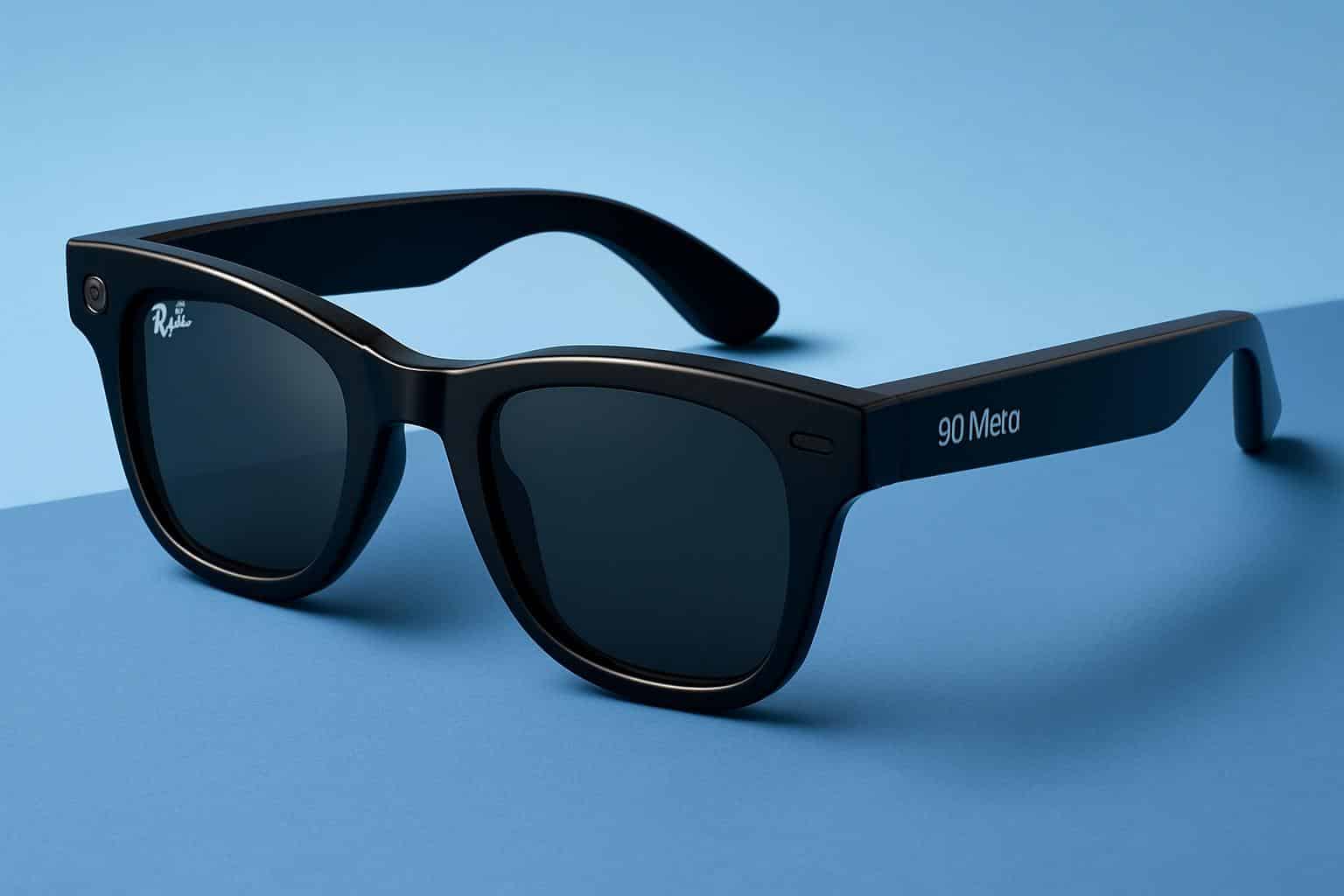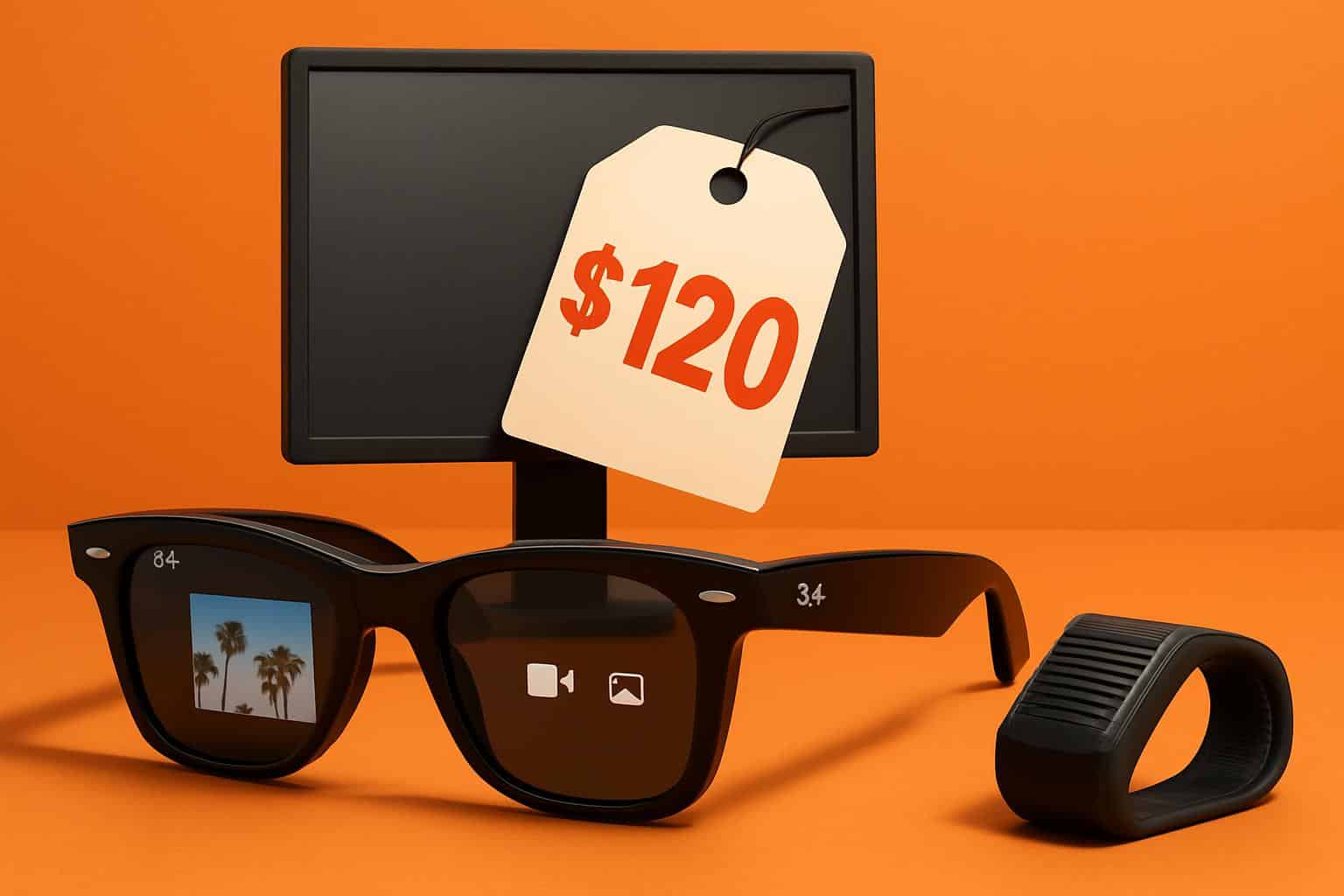Meta’s Ray-Ban Display smart glasses are suddenly an even more appealing purchase. A temporary $120 discount shaves the regular price of $799, with the deal spotlighting a pair of glasses that boast serious geek cred: a modest built-in display; clever on-face computing; and a neural wristband that takes tiny pinches of your fingers and turns them into precise controller signals.
What You Really Get For Your Money With These Glasses
Central to it is a colour microdisplay that allows you to preview photos and video in your line of sight — no need to peek at your phone. It is coupled with a waveguide that, per Meta’s briefings to journalists, contains light leakage to about 2 percent, so folks nearby can’t tell when your screen is turned on. In reality, it means these specs are unusually inconspicuous for a product with a HUD you can see.

Audio is another standout, with the open-ear speakers sounding far better than most smart specs, and beamforming mics doing a decent job of filtering out noise when you’re making calls. Real-time captions for face-to-face conversations can be a real boon during loud events, or for those who benefit from on-the-fly transcription.
All styles come with transition lenses, so they appear clear indoors and darken in the sun. That’s important, because the frames still look very much like Ray-Bans — classic in appearance and something that helps this wearable tech blend more seamlessly into your life than if it were holding up a sign saying: “I have a gadget on my face!”
Why Meta’s Neural Wristband Is The Secret Sauce
Meta’s companion wristband employs electromyography to sense small hand and finger movements, enabling you to pinch, swipe and twist your way through the interface without poking at the frames. The learning curve is somewhat shallower than it seems: the majority of users can learn a half-dozen or so core gestures extremely easily, because they mimic natural motion.
Meta’s leadership has suggested that the band could become more than a mere controller, perhaps incorporating watch-like capabilities in future iterations. Academic research, including work conducted at Carnegie Mellon, has demonstrated that the upper-arm region’s wrist-based EMG can achieve high accuracy for static and dynamic gestures, etching a bright future for both capabilities and accessibility enhancements.
Competitors More Practical, Less Subtle
If you are in search of the most day-one utility possible, AR glasses like those from Rokid are still a plausible foil. They emphasise translation, teleprompter tools and strong heads-up utilities that may feel as though they’re more useful now than Meta’s slicker approach. The trade-off is visibility: their optics are easier to see, and onlookers might see light reflecting off the lenses while they’re in use.

Price is another difference. Rokid’s newer models undercut Meta’s $799 price tag and the company often runs aggressive promos. But they don’t have those Ray-Ban looks, the transition lenses or that next-level-low amount of light leakage that makes Meta’s glasses feel socially acceptable in more places.
Availability also matters. Supply chain chatter reported by publications including The Information and analyst notes indicate Meta is keeping production small — at a scale of on the order of low hundreds of thousands of units over a long run duration — while initial batches are being sold only in certain markets. It’s possible that it will go on backorder, and there could be a wait involved.
Is The Discount Worth Hitting Buy On Right Now?
That $120 off brings the effective price down to roughly $679. That is still premium territory, but the value calculus changes if you care about stealthy capture, a built-in viewfinder or hands-free control. For creators, being able to frame shots in-glasses and get clean audio without earbuds could be a real workflow asset. Live captions and gentle notifications are quietly useful for most everyday wearers.
If you’re focused on translation, or productivity while using the display, you might get more immediacy of return from a rival with louder optics and a lower price. If you are curious to experience what smart glasses look like as glasses and that push the category forward in both design and input, Meta’s are the geekier, more refined bet.
What to Consider Carefully Before You Place an Order
- Prescription support and lens swaps: Check if your desired frames can accommodate active or prescription lenses, and whether there are optical partners who can ensure clarity of the displays after the lenses have been swapped.
- Battery and heat: Most smart glasses offer several hours of mixed use. You’ll want to charge more often if you record video or heavily stream audio; short hot spots near the temples are par for the course under such a load.
- Privacy and policies: Eyewear cameras raise etiquette questions. Adhere to local regulations for filming and ask before taping. Outlets like the Electronic Frontier Foundation offer advice on how to wield them responsibly; regulators have indicated stricter scrutiny for wearable cameras in particularly sensitive spaces.
- Return windows and support: Look into retailer return policies and warranty coverage. It is also often true that early hardware can get significant value from quick software updates; Meta has repeatedly shipped iterative improvements that drastically alter day-to-day use, after all.
Bottom line: A temporary $120 discount renders Meta’s Ray-Ban Display glasses easier to justify if you prioritise style, discretion (for the sake of privacy) and a forward-thinking control scheme. They’re not the most useful smart glasses for every task today — but they are the most ready to disappear into your life while doing distinctly futuristic stuff.

